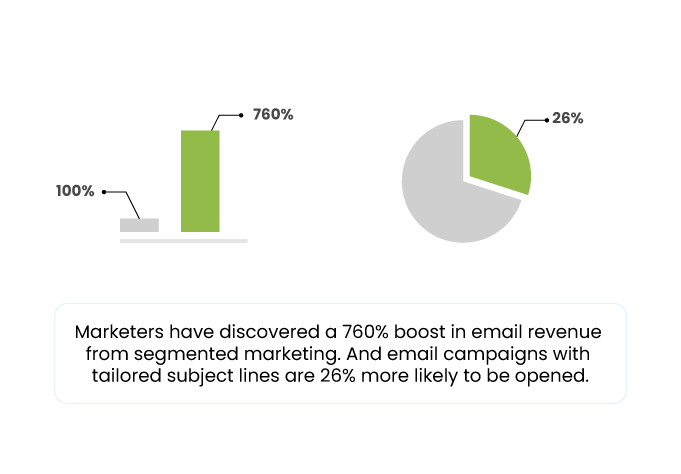
Marketing job roles can be relatively exhausting, and when it comes time to hit that email send button, you may notice some anxiety setting in. A recent survey found that 71% of email marketers find their jobs stressful. Often known as sender anxiety, maybe you start to second guess yourself? “Did I use the correct subject line? Are the links in the email working? Did we select the right segments? Are there any typos in the content? Did I update everything to the latest version? Yikes!” All these questions are enough even to make a pro sweat and feel nervous. Not to worry – in the end, everything will turn out well, and you will be fine. Let’s look at how to manage email marketing stress and, at the same time, increase the QA and job enjoyment.
6 Email Marketing Stress Factors and Ways to Combat Them
What fears lead to anxiety, and how can we deal with them proactively? First, it is always good to have a pre-made “oops email” by hand to deal with mistakes, but even better to avoid mistakes altogether. Let’s find out what these stressors are and what to do about them.
1. Broken links and wrong landing pages
Broken links are as dangerous to your conversion as they sound – they can break it! A link that doesn’t work won’t only make your email look unprofessional, but it can ruin your conversion rates. Pointing to the wrong page on your site is one thing, but it can be worse. Increasing embarrassment for the employee responsible for the email. Mistakes happen often enough to keep haunting the minds of email marketers.
Solution: The basic solution is plain simple QA. Test all the links in your email before sending it. Test by checklist, test by doing a test send. And potentially send the final email to your colleagues. Then ask them to look at the links clearly and click to see if they are redirected to the right page.
Next-level solution: Sophisticated marketers love automated checking, and for instance, RSS feeds that will include the right URLs by default. If you think of adding UTM tracking codes by hand… better find a way to do that automated.
2. You picked the wrong list, or personalization data goes missing
Email marketers usually have multiple email lists and segments, so you need to pick the right list without any mess-ups. But sometimes, in spite of getting every other thing right, you might fudge this one here. And this can cause serious problems.
For example, picking the list from the wrong brand, the exclusion list instead of the selection to get your discount? To avoid that kind of workplace stress, take extra caution with your email list!

Solution: First, leave as little room for mistakes as possible. Remove old lists if you aren’t using them anymore. Use clear, very clear naming conventions and pick (self-updating) dynamic lists where possible. A good practice is to estimate how many people your email should go to (so you will notice immediately if something is wrong).
And in testing, use a test person and their real personalization data to see if all the data is there.
3. Broken designs and images not loading
One of the unspoken factors of email marketing stress is if the email somehow becomes unreadable. Will images load properly? As we know, images are very crucial when sending promotional newsletters. What if the client doesn’t load the pictures? Because then the entire point of the email will go up in smoke. This fear stresses the marketers out and makes them anxious.
Solution: Obviously, the email templates should be bulletproof, you can use a render checking tool to test and see how your mail looks in different email clients. The easiest way to get some relief from the fear of non-loading images is to create a fallback. The most important content should be visible if images aren’t loaded. In addition, make sure each image has descriptive alt text.
4. Typos and text snafus
How often do you get nervous regarding correct grammar? Typos are considered honest mistakes, even if you have full confidence about your grandma-mar (just like grammar*), it can end up being a big problem. Although it’s easy to make mistakes, typos don’t look professional and can confuse your reader or even end up with your email saying something you really didn’t want to say.
Solution: It is often hard to see our own spelling mistakes. Separating the writing of the email copy and importing it into the email is already a big step in improving. You can use spell checker, email copy tools, Grammarly, and other proofreading tools. They check the content and highlight grammatical errors. These tools also suggest a better writing style and alternate sentence and word usage. With this add-on, you can keep your typo-induced stress at bay. What you can do in addition is send your email to your colleague to review it once and also read it slowly to yourself.
5. Personalization
When we talk about email personalization, we mean creating unique emails for each person on the email list by using their data. All of this can be done with the help of your trusty email marketing tool. The benefits of email personalization are obvious – you’ll send more relevant emails that feel more personal and keep the subscribers interested.

However, with so much data and segmentation involved, email marketers can get a panic attack. Will the personalization tags work? Did we load all the right (and correct!) data?
Solution: Ensuring that the data is correct and correctly imported is the first step. Now, you can test the personalization tags to be used correctly with a test send. But secondly and just as importantly – make sure you have correct (and not embarrassing) fallbacks. Fallbacks are used to display if someone’s data is missing to show an alternative (or nothing at all).
6. Bad results
Introducing a new campaign is always a bit exciting. First, it’s new. Second, the email will go to potential customers and must be appealing. Because email campaigns aim to drive conversions and engage. Knowing what doesn’t work is equally important as knowing what does. Because then you know what things to avoid in your next email. Counter-intuitive, but you need bad results to improve your email performance. But what if the emails don’t do their job?
Solution: For one, don’t worry, not every campaign will be a home run. It can’t be. But the fear of not meeting your goals is real. So spread your risks. Start off with an A/B test or a smaller sample before sending the full list. That way, you can see which works better. To improve the conversion rate of email campaigns, consider building a reward program for your prospects.
Also, it makes a lot of sense to report and set goals per period instead of per single email. So if one email is not a hit, you can make it up with some extra sends later.
Basic tips to get rid of email marketing stress and anxiety while sending emails
You ought to be in a calm state of mind when working, and stress is the last thing you would want. So, to avoid email marketing stress and anxiety, you can follow these simple, easy steps:
- Listen to some relaxing tunes, take up sport or yoga, and ease off on the coffee and energy drinks. All good for overall wellness. (including email marketing.
- Keep a proofreader and QA checker handy (the digital and human ones), so you can get them to do a (final) check before sending each mail.
- Create a checklist to include all the things needed before pushing Send. Things like checking the subject line, pre-header, images, checking links, and landing pages. Once you have that checklist, go through it point-by-point before sending the email.
- Avoid distraction and multitasking. And especially avoid last-minute changes.
- Last but not least – have an “Oops email” and process ready in case something does go wrong.
Wrapping up
As an email marketer, it is natural to have some email marketing stress now and then. It’s up to you to transform that email anxiety into email positivity. Tackle each potential point one at a time and carry on. Don’t panic over sending the wrong link or committing a typo. Just remember that mistakes and mishaps are a part of our lives, and we all make them. In fact, they play a big role in improving our skill set.
So, do not let fear pull you down. We hope the tips mentioned above help you break new ground, face your email marketing fears, and alleviate them.
Keep your worries aside and be confident before clicking that “Send” button.
 About the Author
About the Author
Besides working as a Content Writer at Vantage Circle, Dipshi Bhattacharjee is an animal lover with a huge fascination for cinema, television & foreign languages.
